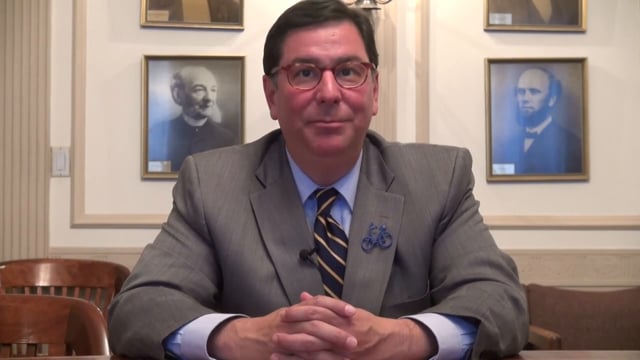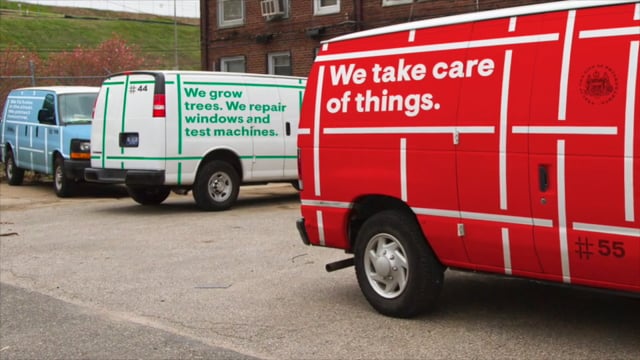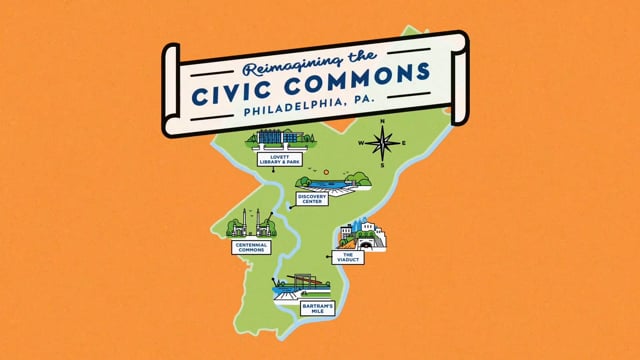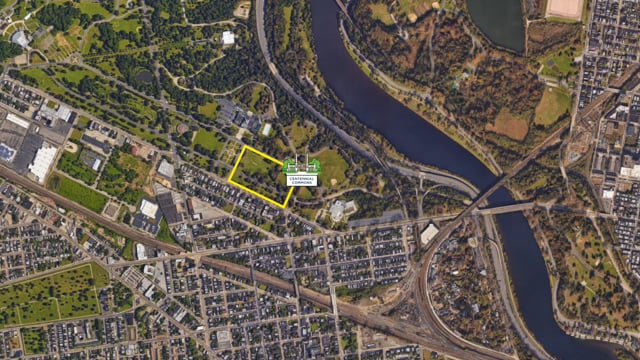Loading map...
{"format":"leaflet","minzoom":false,"maxzoom":false,"limit":99999,"offset":0,"link":"all","sort":[""],"order":[],"headers":"show","mainlabel":"","intro":"","outro":"","searchlabel":"\u003Cspan class=\"mw-ui-button\" style=\"margin: .5em 0;\"\u003EMore results\u003C/span\u003E","default":"","import-annotation":false,"width":"auto","height":"350px","centre":false,"title":"","label":"","icon":"","lines":[],"polygons":[],"circles":[],"rectangles":[],"copycoords":false,"static":false,"zoom":false,"defzoom":14,"layers":["OpenStreetMap"],"image layers":[],"overlays":[],"resizable":false,"fullscreen":false,"scrollwheelzoom":true,"cluster":true,"clustermaxzoom":20,"clusterzoomonclick":true,"clustermaxradius":80,"clusterspiderfy":true,"geojson":"","clicktarget":"","showtitle":true,"hidenamespace":true,"template":"","userparam":"","activeicon":"","pagelabel":false,"ajaxcoordproperty":"","ajaxquery":"","locations":[{"text":"\u003Cb\u003E\u003Ca href=\"/User:Ajkirstein\" title=\"User:Ajkirstein\"\u003EAjkirstein\u003C/a\u003E\u003C/b\u003E","title":"Ajkirstein","link":"","lat":40.44169444444400340898937429301440715789794921875,"lon":-79.99008611111099753543385304510593414306640625,"icon":""},{"text":"\u003Cb\u003E\u003Ca href=\"/User:Axelcosio\" title=\"User:Axelcosio\"\u003EAxelcosio\u003C/a\u003E\u003C/b\u003E","title":"Axelcosio","link":"","lat":41.181877777777998517194646410644054412841796875,"lon":-79.429169444443999736904515884816646575927734375,"icon":""},{"text":"\u003Cb\u003E\u003Ca href=\"/User:B-Susannah_Luther\" title=\"User:B-Susannah Luther\"\u003EB-Susannah Luther\u003C/a\u003E\u003C/b\u003E","title":"B-Susannah Luther","link":"","lat":41.8742222222220021876637474633753299713134765625,"lon":-80.1317222222219953664534841664135456085205078125,"icon":""},{"text":"\u003Cb\u003E\u003Ca href=\"/User:Cefrederick\" title=\"User:Cefrederick\"\u003ECefrederick\u003C/a\u003E\u003C/b\u003E","title":"Cefrederick","link":"","lat":41.181877777777998517194646410644054412841796875,"lon":-79.429169444443999736904515884816646575927734375,"icon":""},{"text":"\u003Cb\u003E\u003Ca href=\"/User:Dj_giallomb\" title=\"User:Dj giallomb\"\u003EDj giallomb\u003C/a\u003E\u003C/b\u003E","title":"Dj giallomb","link":"","lat":41.181877777777998517194646410644054412841796875,"lon":-79.429169444443999736904515884816646575927734375,"icon":""},{"text":"\u003Cb\u003E\u003Ca href=\"/User:Dlmartz\" title=\"User:Dlmartz\"\u003EDlmartz\u003C/a\u003E\u003C/b\u003E","title":"Dlmartz","link":"","lat":41.181877777777998517194646410644054412841796875,"lon":-79.429169444443999736904515884816646575927734375,"icon":""},{"text":"\u003Cb\u003E\u003Ca href=\"/User:Ehenriques\" title=\"User:Ehenriques\"\u003EEhenriques\u003C/a\u003E\u003C/b\u003E","title":"Ehenriques","link":"","lat":41.8742222222220021876637474633753299713134765625,"lon":-80.1317222222219953664534841664135456085205078125,"icon":""},{"text":"\u003Cb\u003E\u003Ca href=\"/User:Emccormick\" title=\"User:Emccormick\"\u003EEmccormick\u003C/a\u003E\u003C/b\u003E","title":"Emccormick","link":"","lat":40.44169444444400340898937429301440715789794921875,"lon":-79.99008611111099753543385304510593414306640625,"icon":""},{"text":"\u003Cb\u003E\u003Ca href=\"/User:Emccormick\" title=\"User:Emccormick\"\u003EEmccormick\u003C/a\u003E\u003C/b\u003E","title":"Emccormick","link":"","lat":41.8742222222220021876637474633753299713134765625,"lon":-80.1317222222219953664534841664135456085205078125,"icon":""},{"text":"\u003Cb\u003E\u003Ca href=\"/Emergency_childbirth\" title=\"Emergency childbirth\"\u003EEmergency childbirth\u003C/a\u003E\u003C/b\u003E","title":"Emergency childbirth","link":"","lat":41.181877777777998517194646410644054412841796875,"lon":-79.429169444443999736904515884816646575927734375,"icon":""},{"text":"\u003Cb\u003E\u003Ca href=\"/User:GPSmith\" title=\"User:GPSmith\"\u003EGPSmith\u003C/a\u003E\u003C/b\u003E","title":"GPSmith","link":"","lat":41.8742222222220021876637474633753299713134765625,"lon":-80.1317222222219953664534841664135456085205078125,"icon":""},{"text":"\u003Cb\u003E\u003Ca href=\"/Grameen_Phone\" title=\"Grameen Phone\"\u003EGrameen Phone\u003C/a\u003E\u003C/b\u003E","title":"Grameen Phone","link":"","lat":40.96998888888899870153181836940348148345947265625,"lon":-77.7278833333329970400882302783429622650146484375,"icon":""},{"text":"\u003Cb\u003E\u003Ca href=\"/User:Hlemmex\" title=\"User:Hlemmex\"\u003EHlemmex\u003C/a\u003E\u003C/b\u003E","title":"Hlemmex","link":"","lat":41.8742222222220021876637474633753299713134765625,"lon":-80.1317222222219953664534841664135456085205078125,"icon":""},{"text":"\u003Cb\u003E\u003Ca href=\"/House_insulation\" title=\"House insulation\"\u003EHouse insulation\u003C/a\u003E\u003C/b\u003E","title":"House insulation","link":"","lat":40.96998888888899870153181836940348148345947265625,"lon":-77.7278833333329970400882302783429622650146484375,"icon":""},{"text":"\u003Cb\u003E\u003Ca href=\"/How_to_build_your_own_fuel_cell\" title=\"How to build your own fuel cell\"\u003EHow to build your own fuel cell\u003C/a\u003E\u003C/b\u003E","title":"How to build your own fuel cell","link":"","lat":40.96998888888899870153181836940348148345947265625,"lon":-77.7278833333329970400882302783429622650146484375,"icon":""},{"text":"\u003Cb\u003E\u003Ca href=\"/User:JasonRHolloway\" title=\"User:JasonRHolloway\"\u003EJasonRHolloway\u003C/a\u003E\u003C/b\u003E","title":"JasonRHolloway","link":"","lat":41.8742222222220021876637474633753299713134765625,"lon":-80.1317222222219953664534841664135456085205078125,"icon":""},{"text":"\u003Cb\u003E\u003Ca href=\"/User:Jerseypike\" title=\"User:Jerseypike\"\u003EJerseypike\u003C/a\u003E\u003C/b\u003E","title":"Jerseypike","link":"","lat":41.8742222222220021876637474633753299713134765625,"lon":-80.1317222222219953664534841664135456085205078125,"icon":""},{"text":"\u003Cb\u003E\u003Ca href=\"/Landwirtschaftlichen_Abfall_wiederverwerten,_um_hei%C3%9Fes_Wasser_herzustellen\" title=\"Landwirtschaftlichen Abfall wiederverwerten, um hei\u00dfes Wasser herzustellen\"\u003ELandwirtschaftlichen Abfall wiederverwerten, um hei\u00dfes Wasser herzustellen\u003C/a\u003E\u003C/b\u003E","title":"Landwirtschaftlichen Abfall wiederverwerten, um hei\u00dfes Wasser herzustellen","link":"","lat":39.9169416666670002769023994915187358856201171875,"lon":-75.1710583333329935840083635412156581878662109375,"icon":""},{"text":"\u003Cb\u003E\u003Ca href=\"/User:LynnMcG\" title=\"User:LynnMcG\"\u003ELynnMcG\u003C/a\u003E\u003C/b\u003E","title":"LynnMcG","link":"","lat":41.181877777777998517194646410644054412841796875,"lon":-79.429169444443999736904515884816646575927734375,"icon":""},{"text":"\u003Cb\u003E\u003Ca href=\"/Mashavu_Stethoscope\" title=\"Mashavu Stethoscope\"\u003EMashavu Stethoscope\u003C/a\u003E\u003C/b\u003E","title":"Mashavu Stethoscope","link":"","lat":40.96998888888899870153181836940348148345947265625,"lon":-77.7278833333329970400882302783429622650146484375,"icon":""},{"text":"\u003Cb\u003E\u003Ca href=\"/User:MaureenEG713\" title=\"User:MaureenEG713\"\u003EMaureenEG713\u003C/a\u003E\u003C/b\u003E","title":"MaureenEG713","link":"","lat":41.8742222222220021876637474633753299713134765625,"lon":-80.1317222222219953664534841664135456085205078125,"icon":""},{"text":"\u003Cb\u003E\u003Ca href=\"/User:Maureeneg713\" title=\"User:Maureeneg713\"\u003EMaureeneg713\u003C/a\u003E\u003C/b\u003E","title":"Maureeneg713","link":"","lat":41.8742222222220021876637474633753299713134765625,"lon":-80.1317222222219953664534841664135456085205078125,"icon":""},{"text":"\u003Cb\u003E\u003Ca href=\"/User:Melbelleup\" title=\"User:Melbelleup\"\u003EMelbelleup\u003C/a\u003E\u003C/b\u003E","title":"Melbelleup","link":"","lat":41.8742222222220021876637474633753299713134765625,"lon":-80.1317222222219953664534841664135456085205078125,"icon":""},{"text":"\u003Cb\u003E\u003Ca href=\"/Notgeburt\" title=\"Notgeburt\"\u003ENotgeburt\u003C/a\u003E\u003C/b\u003E","title":"Notgeburt","link":"","lat":41.181877777777998517194646410644054412841796875,"lon":-79.429169444443999736904515884816646575927734375,"icon":""},{"text":"\u003Cb\u003E\u003Ca href=\"/User:Paul_Wilson\" title=\"User:Paul Wilson\"\u003EPaul Wilson\u003C/a\u003E\u003C/b\u003E","title":"Paul Wilson","link":"","lat":41.8742222222220021876637474633753299713134765625,"lon":-80.1317222222219953664534841664135456085205078125,"icon":""},{"text":"\u003Cb\u003E\u003Ca href=\"/Pennsylvania_State_University\" title=\"Pennsylvania State University\"\u003EPennsylvania State University\u003C/a\u003E\u003C/b\u003E","title":"Pennsylvania State University","link":"","lat":40.96998888888899870153181836940348148345947265625,"lon":-77.7278833333329970400882302783429622650146484375,"icon":""},{"text":"\u003Cb\u003E\u003Ca href=\"/Pennsylvania_community_action\" title=\"Pennsylvania community action\"\u003EPennsylvania community action\u003C/a\u003E\u003C/b\u003E","title":"Pennsylvania community action","link":"","lat":40.96998888888899870153181836940348148345947265625,"lon":-77.7278833333329970400882302783429622650146484375,"icon":""},{"text":"\u003Cb\u003E\u003Ca href=\"/Pennsylvania_community_activism_news\" title=\"Pennsylvania community activism news\"\u003EPennsylvania community activism news\u003C/a\u003E\u003C/b\u003E","title":"Pennsylvania community activism news","link":"","lat":40.96998888888899870153181836940348148345947265625,"lon":-77.7278833333329970400882302783429622650146484375,"icon":""},{"text":"\u003Cb\u003E\u003Ca href=\"/User:Philip93944\" title=\"User:Philip93944\"\u003EPhilip93944\u003C/a\u003E\u003C/b\u003E","title":"Philip93944","link":"","lat":41.181877777777998517194646410644054412841796875,"lon":-79.429169444443999736904515884816646575927734375,"icon":""},{"text":"\u003Cb\u003E\u003Ca href=\"/User:Pumpkinpirate\" title=\"User:Pumpkinpirate\"\u003EPumpkinpirate\u003C/a\u003E\u003C/b\u003E","title":"Pumpkinpirate","link":"","lat":41.8742222222220021876637474633753299713134765625,"lon":-80.1317222222219953664534841664135456085205078125,"icon":""},{"text":"\u003Cb\u003E\u003Ca href=\"/User:Rcraig\" title=\"User:Rcraig\"\u003ERcraig\u003C/a\u003E\u003C/b\u003E","title":"Rcraig","link":"","lat":41.8742222222220021876637474633753299713134765625,"lon":-80.1317222222219953664534841664135456085205078125,"icon":""},{"text":"\u003Cb\u003E\u003Ca href=\"/Recycling_agricultural_wastes_to_produce_hot_water\" title=\"Recycling agricultural wastes to produce hot water\"\u003ERecycling agricultural wastes to produce hot water\u003C/a\u003E\u003C/b\u003E","title":"Recycling agricultural wastes to produce hot water","link":"","lat":39.9169416666670002769023994915187358856201171875,"lon":-75.1710583333329935840083635412156581878662109375,"icon":""},{"text":"\u003Cb\u003E\u003Ca href=\"/SIMPL_Wheelchair\" title=\"SIMPL Wheelchair\"\u003ESIMPL Wheelchair\u003C/a\u003E\u003C/b\u003E","title":"SIMPL Wheelchair","link":"","lat":40.96998888888899870153181836940348148345947265625,"lon":-77.7278833333329970400882302783429622650146484375,"icon":""},{"text":"\u003Cb\u003E\u003Ca href=\"/User:Sbarr\" title=\"User:Sbarr\"\u003ESbarr\u003C/a\u003E\u003C/b\u003E","title":"Sbarr","link":"","lat":41.181877777777998517194646410644054412841796875,"lon":-79.429169444443999736904515884816646575927734375,"icon":""},{"text":"\u003Cb\u003E\u003Ca href=\"/User:Sceric\" title=\"User:Sceric\"\u003ESceric\u003C/a\u003E\u003C/b\u003E","title":"Sceric","link":"","lat":41.181877777777998517194646410644054412841796875,"lon":-79.429169444443999736904515884816646575927734375,"icon":""},{"text":"\u003Cb\u003E\u003Ca href=\"/User:T.Auerbeck\" title=\"User:T.Auerbeck\"\u003ET.Auerbeck\u003C/a\u003E\u003C/b\u003E","title":"T.Auerbeck","link":"","lat":41.8742222222220021876637474633753299713134765625,"lon":-80.1317222222219953664534841664135456085205078125,"icon":""},{"text":"\u003Cb\u003E\u003Ca href=\"/TB_Polymer_Reagent\" title=\"TB Polymer Reagent\"\u003ETB Polymer Reagent\u003C/a\u003E\u003C/b\u003E","title":"TB Polymer Reagent","link":"","lat":40.96998888888899870153181836940348148345947265625,"lon":-77.7278833333329970400882302783429622650146484375,"icon":""},{"text":"\u003Cb\u003E\u003Ca href=\"/Three_Mile_Island\" title=\"Three Mile Island\"\u003EThree Mile Island\u003C/a\u003E\u003C/b\u003E","title":"Three Mile Island","link":"","lat":40.17013611111099891104458947665989398956298828125,"lon":-74.8851972222220041430773562751710414886474609375,"icon":""},{"text":"\u003Cb\u003E\u003Ca href=\"/User:Tlj2741\" title=\"User:Tlj2741\"\u003ETlj2741\u003C/a\u003E\u003C/b\u003E","title":"Tlj2741","link":"","lat":40.96998888888899870153181836940348148345947265625,"lon":-77.7278833333329970400882302783429622650146484375,"icon":""},{"text":"\u003Cb\u003E\u003Ca href=\"/User:Veritas19\" title=\"User:Veritas19\"\u003EVeritas19\u003C/a\u003E\u003C/b\u003E","title":"Veritas19","link":"","lat":41.181877777777998517194646410644054412841796875,"lon":-79.429169444443999736904515884816646575927734375,"icon":""}],"imageLayers":[]}
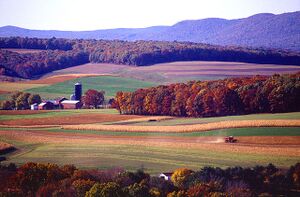
 Once Known for Its Pollution, Pittsburgh Becomes a Poster Child for Climate Consciousness, insideclimatenews.org (Jan 08, 2024)
Once Known for Its Pollution, Pittsburgh Becomes a Poster Child for Climate Consciousness, insideclimatenews.org (Jan 08, 2024)  Free Therapy Putting Philadelphia’s Black Men on a Path to Healing, reasonstobecheerful.world (Aug 30, 2023)
Free Therapy Putting Philadelphia’s Black Men on a Path to Healing, reasonstobecheerful.world (Aug 30, 2023) 
